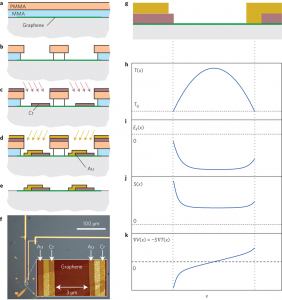A team of researchers from Monash University, the University of Maryland in the US, and the US Naval Research Laboratory have developed a light detector based on graphene and capable of detecting light over an unusually broad range of wavelengths.

According to the media release by Monash University, the research is set to lead to the development of a completely new generation of light detectors that can see below the surface of bodies, walls and other objects. The detector even sees terahertz waves which are invisible to the human eye.
“We have demonstrated light detection from terahertz to near-infrared frequencies, a range about 100 times larger than the visible spectrum. Detection of infrared and terahertz light has numerous uses, from chemical analysis to night vision goggles, and body scanners used in airport security,” said Professor Michael Fuhrer, School of Physics.
“The combination of sensitivity and speed for terahertz detection is simply unprecedented.”
Current technological applications for terahertz detection are limited, as they need to be kept extremely cold to maintain sensitivity. Existing detectors that work at room temperature are bulky, slow, and expensive.
Professor Fuhrer stated the new detector worked at room temperature, and was already as sensitive as any existing room-temperature detector technology in the terahertz range, but was also more than a million times faster.
The researchers believe the detector could have numerous applications and could be used for extra-speedy communications and night vision beyond simple infrared.
One of the breakthroughs could be in the medical sector , as it has the potential to see beyond bone and skin and completely replace x-ray technology.
Their research paper was published in Nature Nanotechnology.



















